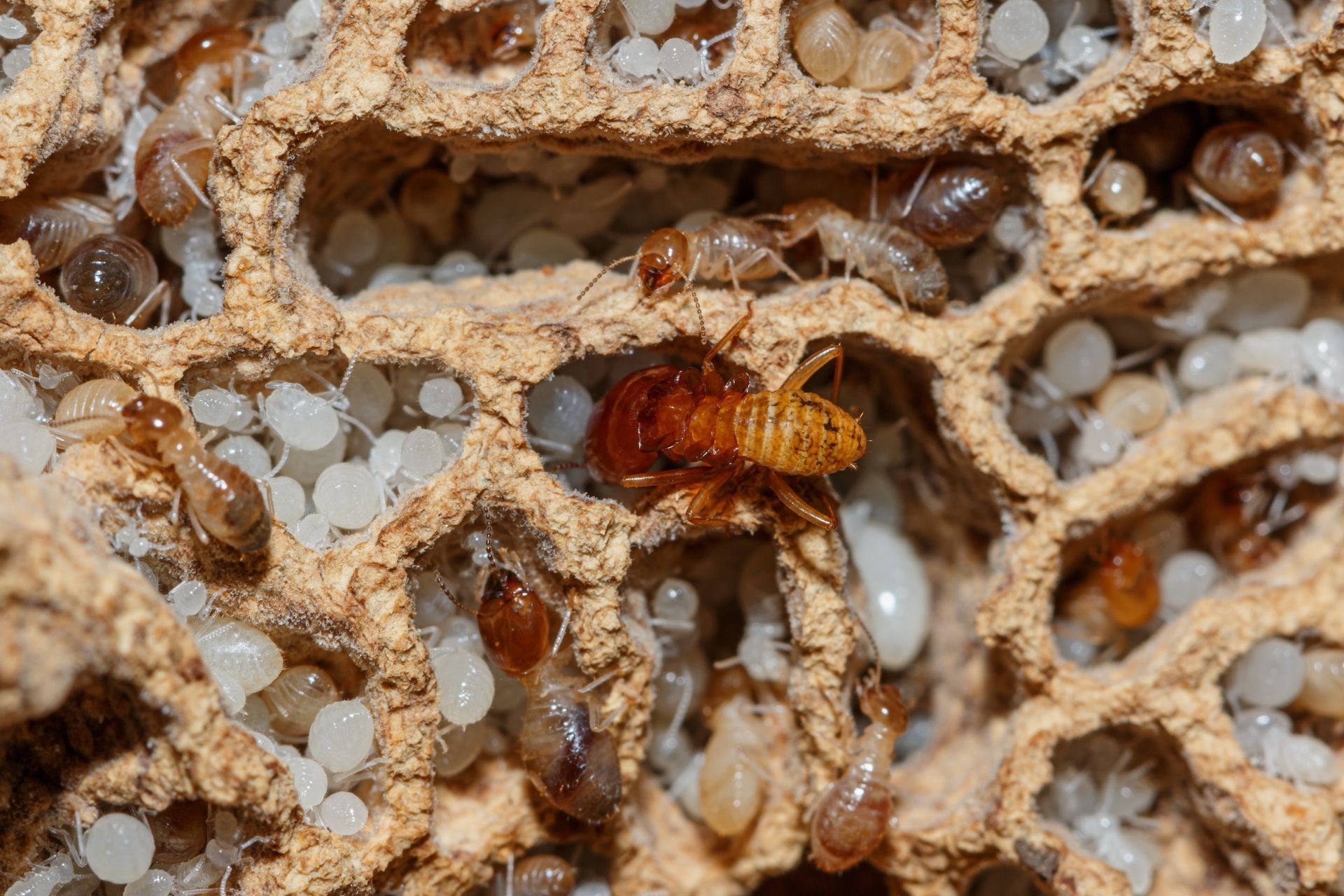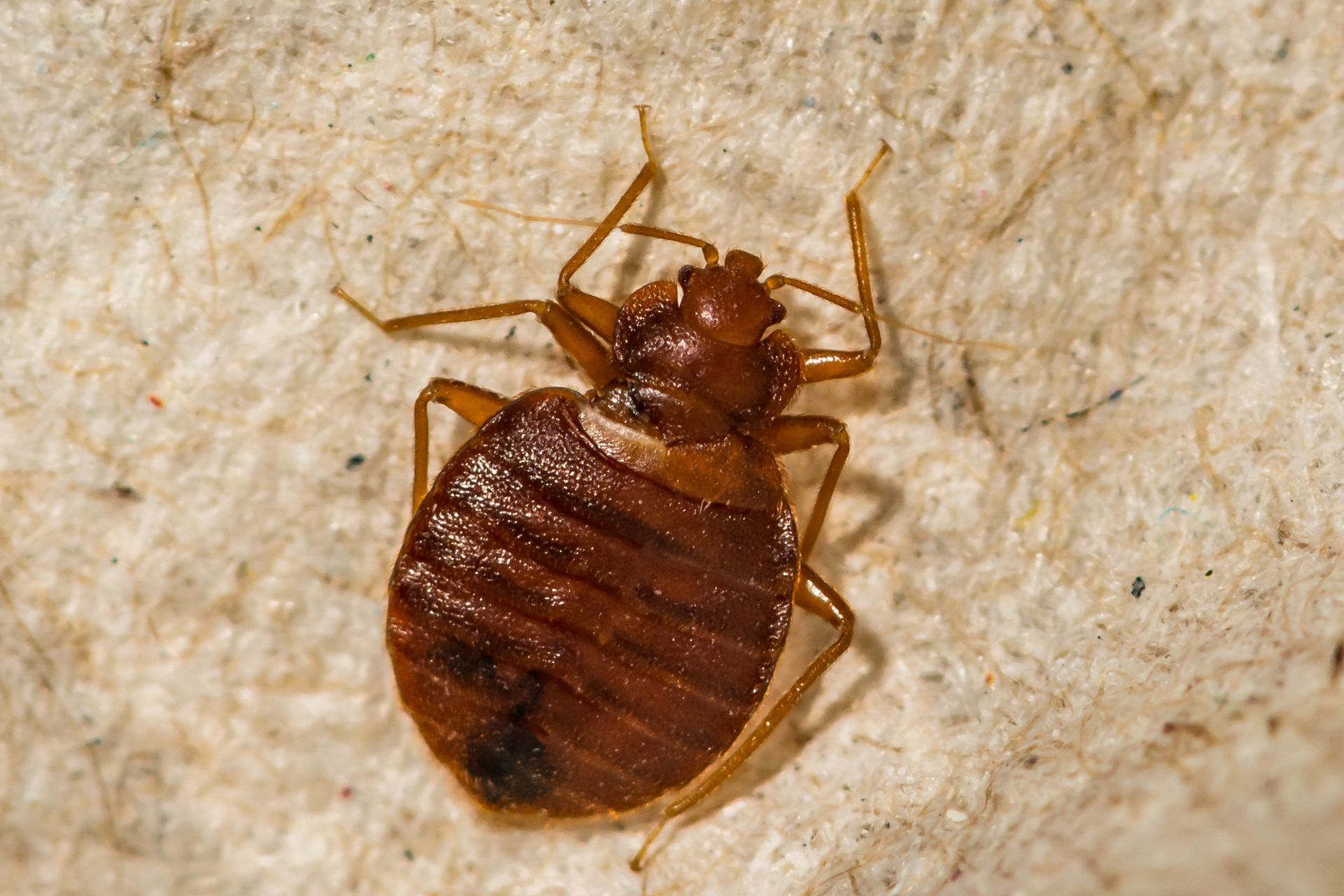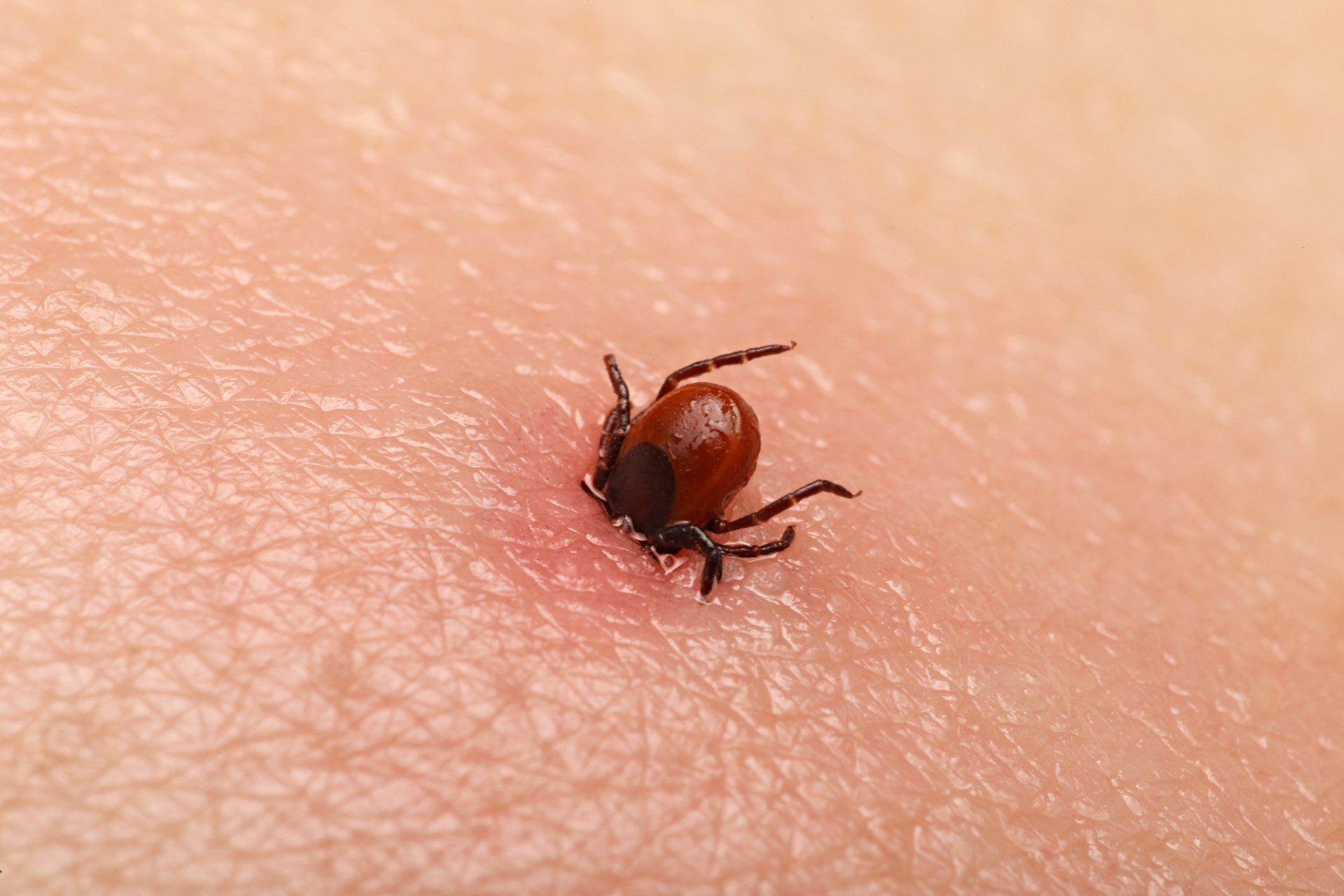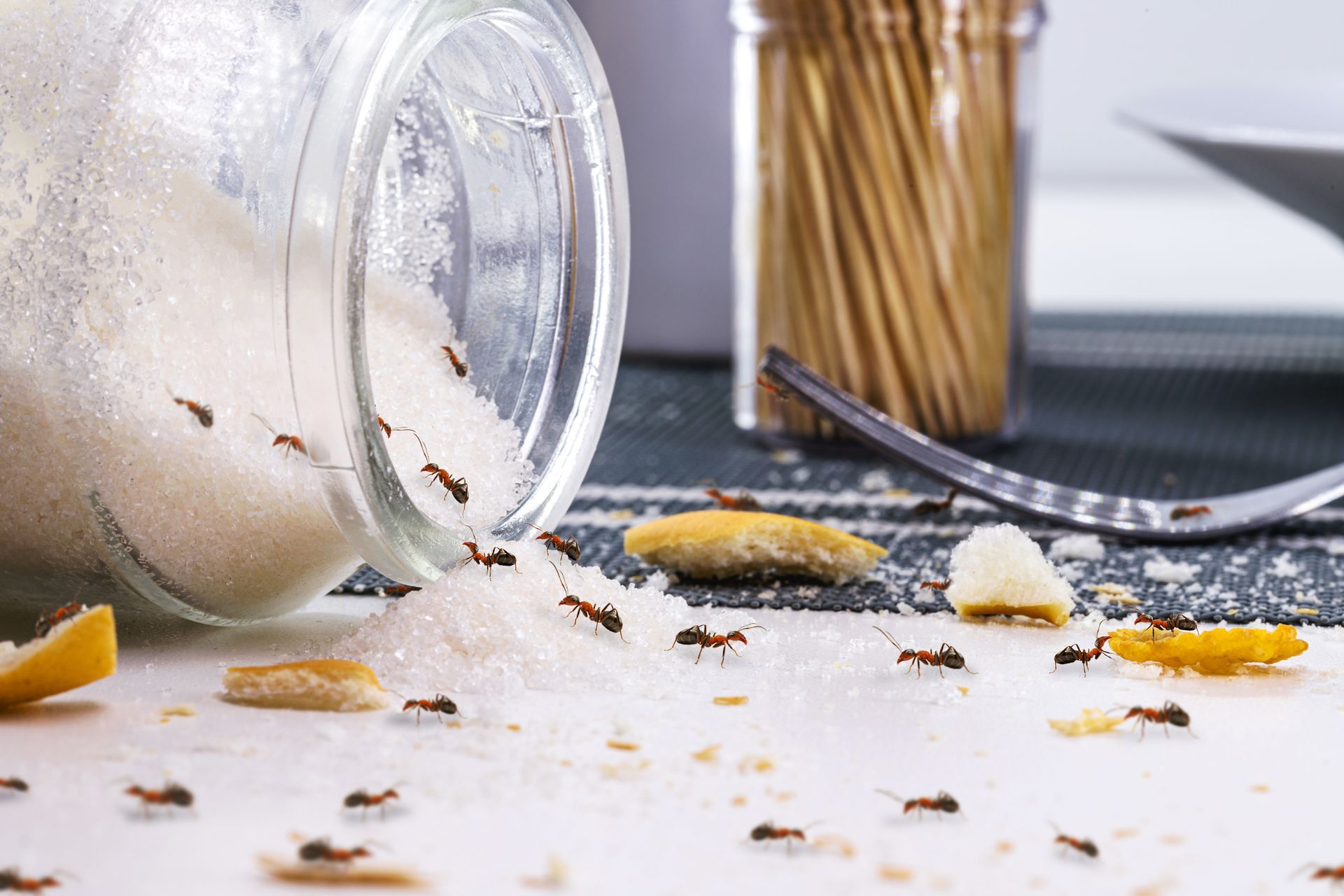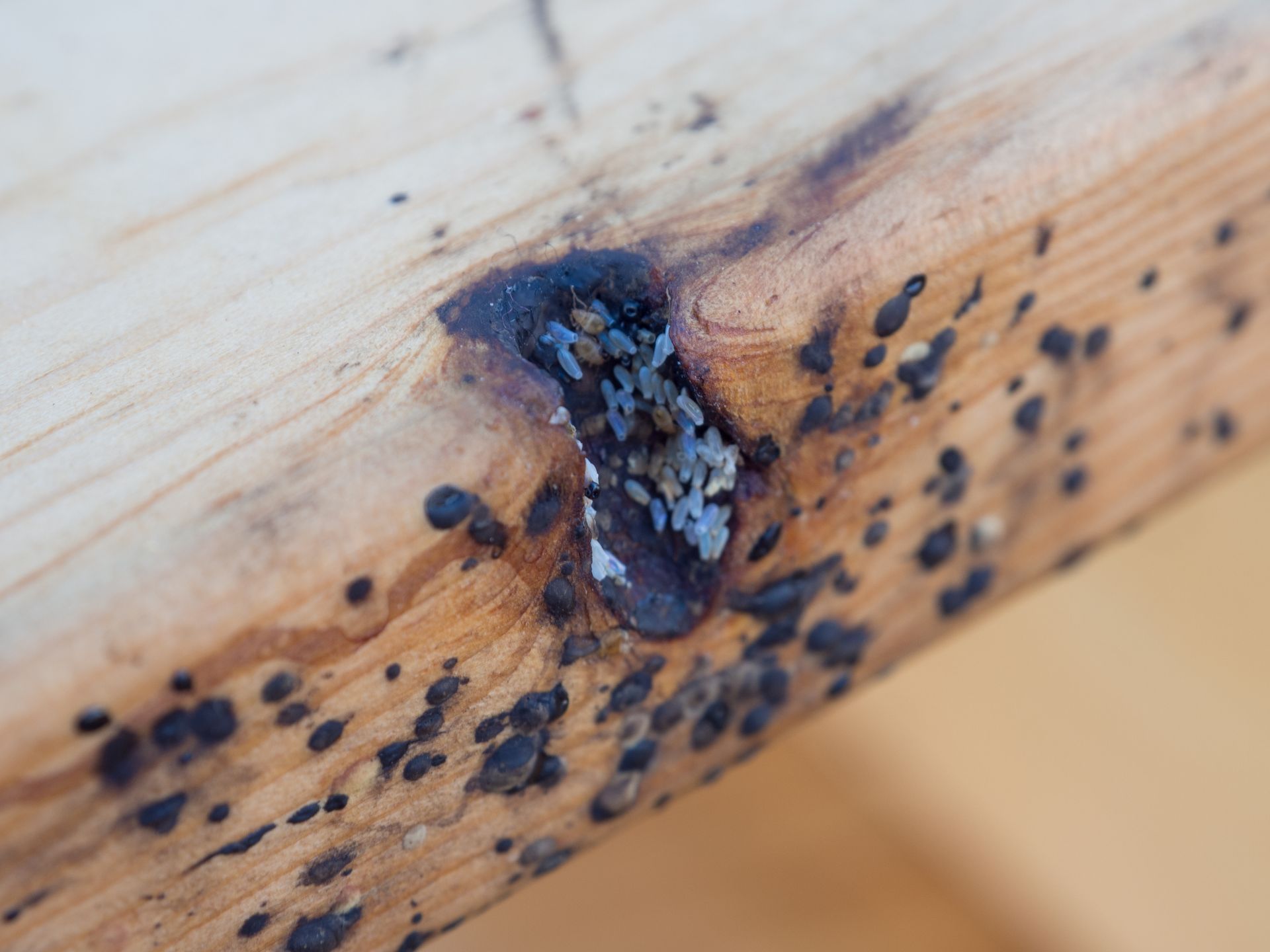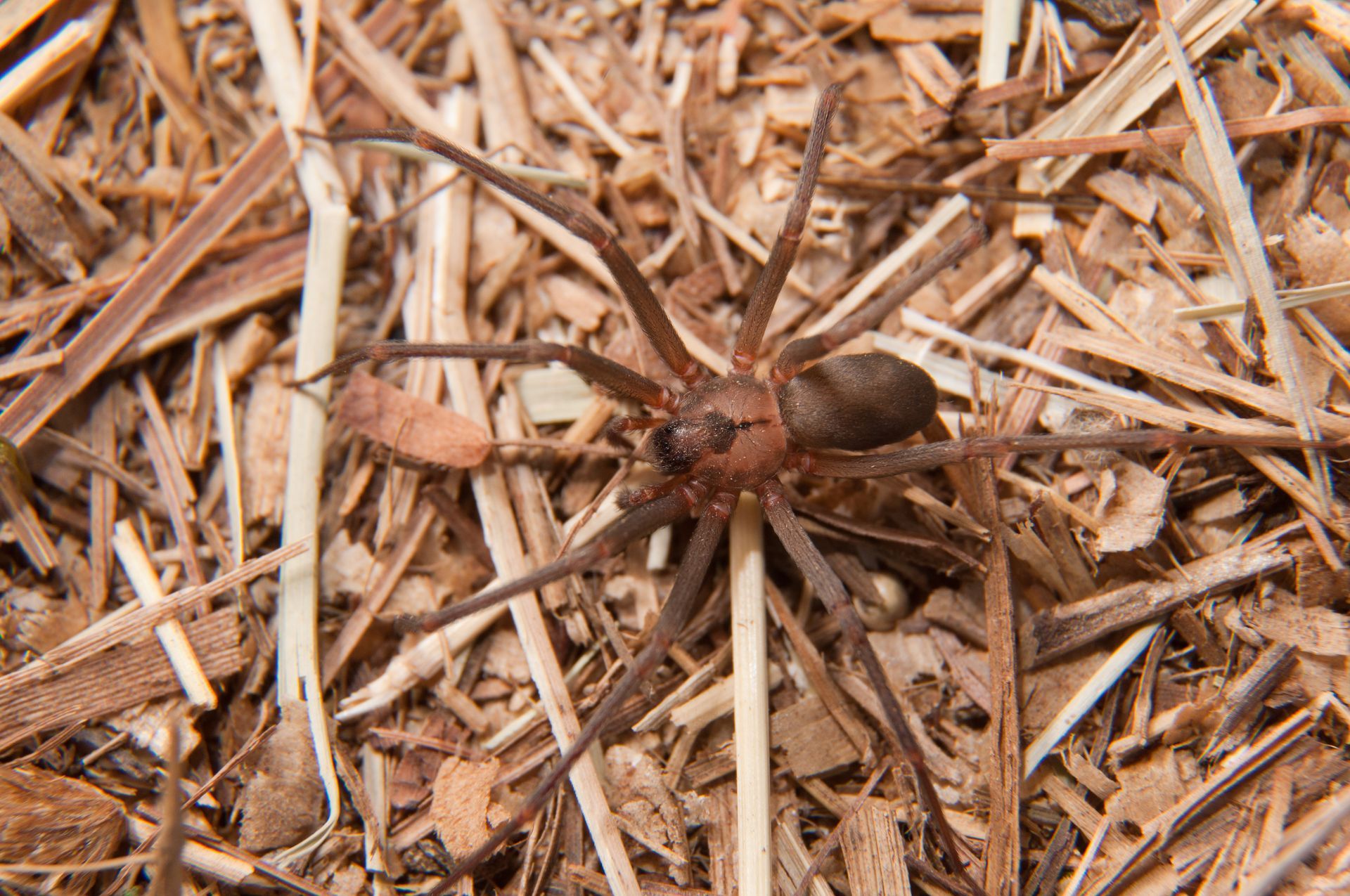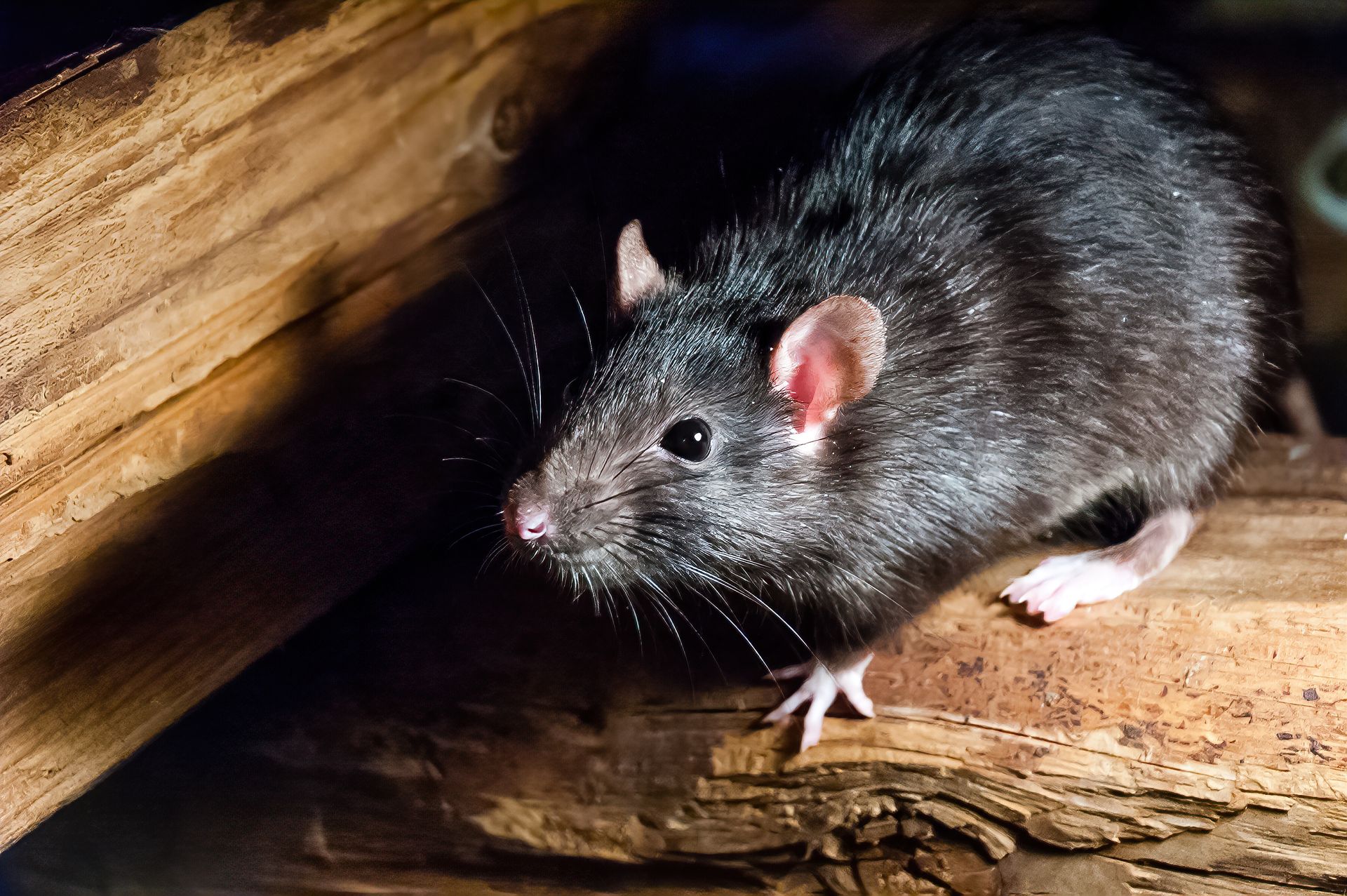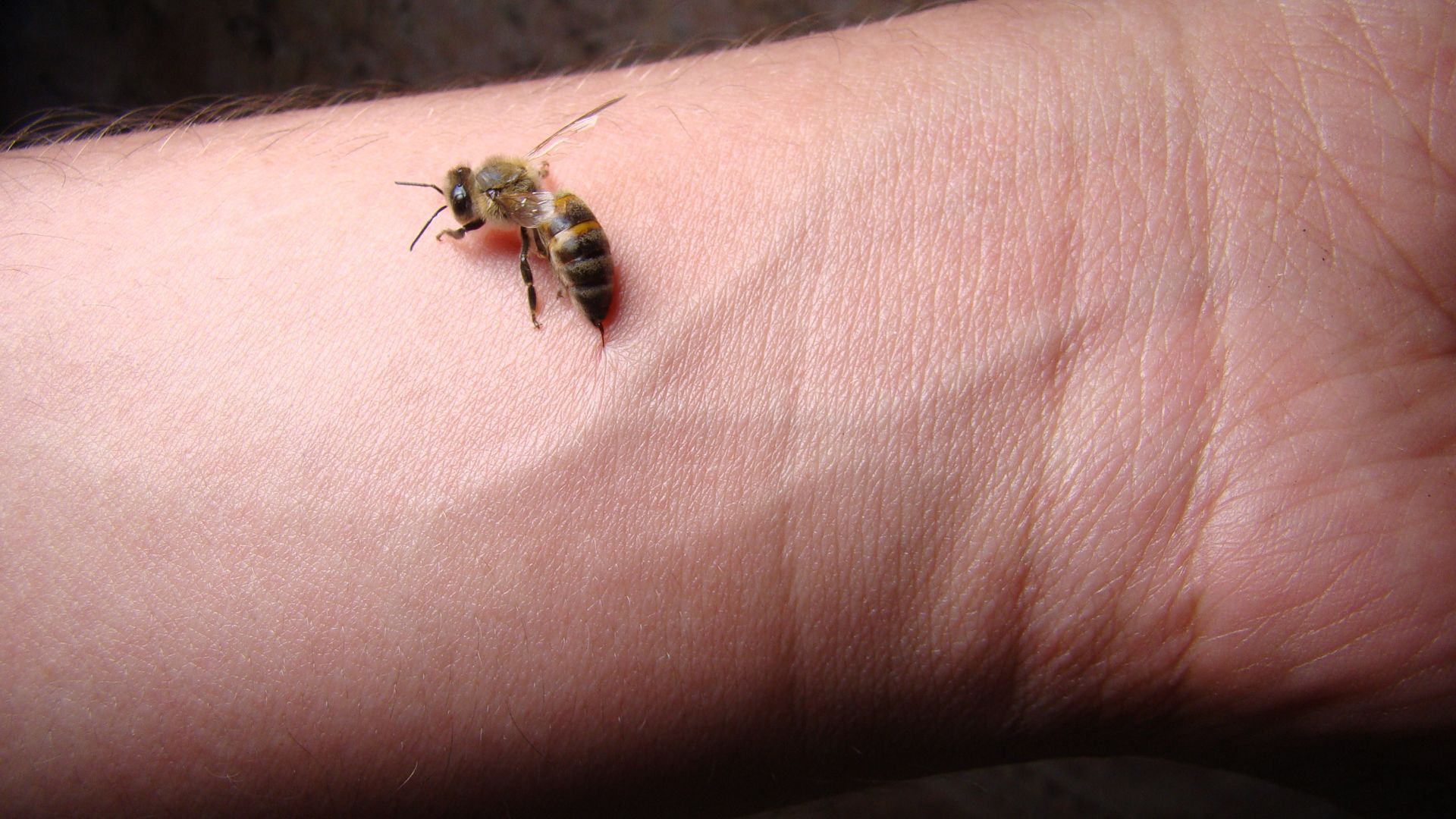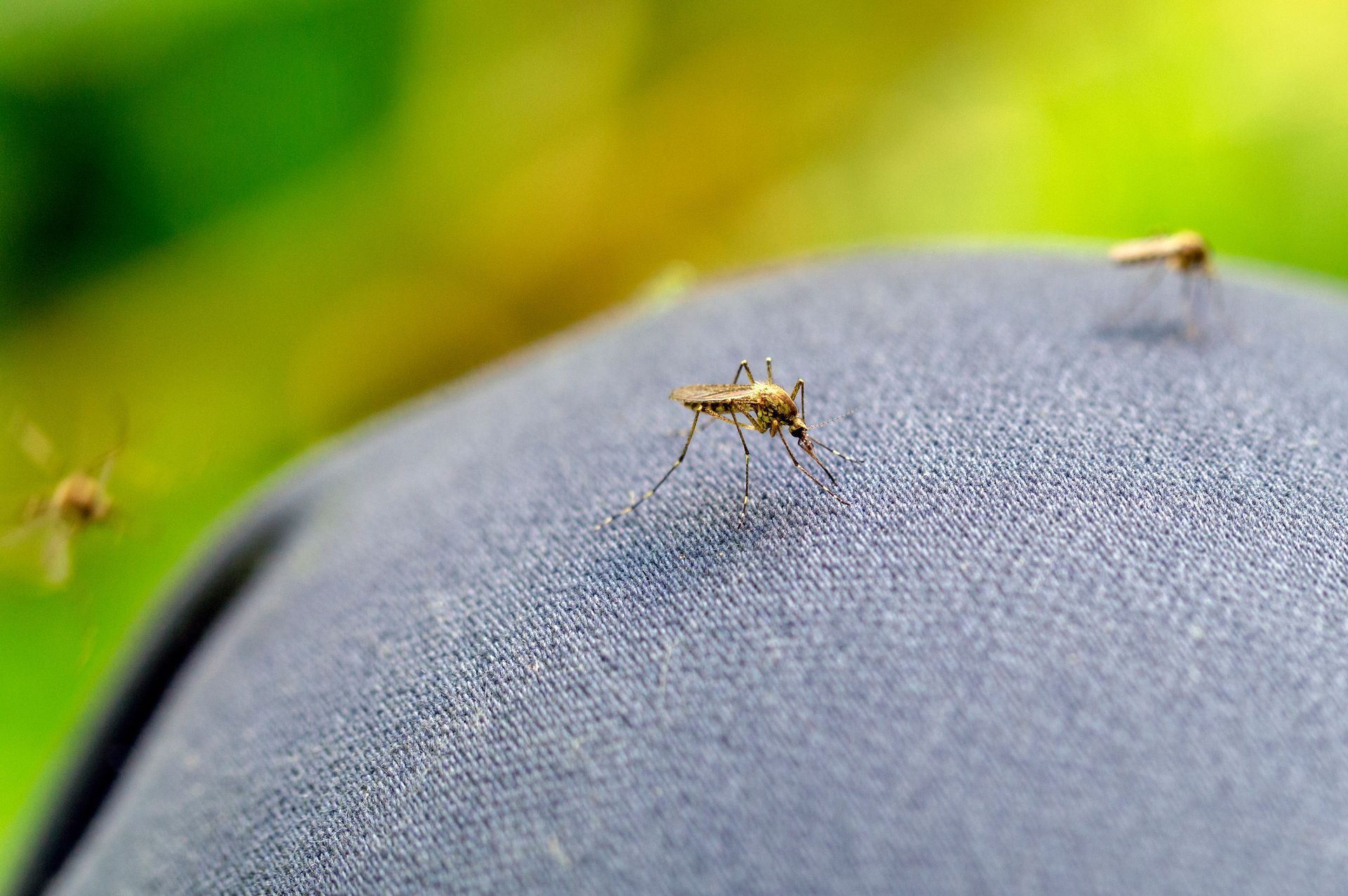21 Different Types of Spiders in North America

Spiders found in the United States are largely harmless creatures that play a critical role in their respective ecosystems. While spider movements and hunting methods might be unsettling, these arachnids are usually far more beneficial than harmful. Thousands of different spider species exist around the world, with close to 3,000 species in North America. Common species like household spiders play critical roles in maintaining other pest populations. However, there are some species like black widows and brown recluses that can deliver a venomous bite. Correct identification of different spider species can help determine the potential threat they pose.
How Many Spider Species Are There?
40,000 different species of spiders exist around the world. These arachnids all share distinct characteristics that make them spiders, but they also come in different shapes, sizes, and colors. For instance, spiders have eight legs, between six to eight eyes, and a body that is divided into two main regions. A spider’s body is segmented into the cephalothorax, which combines the head and thorax, and the abdomen. Interestingly, sexual dimorphism is often exhibited among spiders, with male spiders typically being smaller than females and often displaying different color markings.
Types of Spiders
The different species of spiders are often categorized into active vs passive hunters and venomous and non-venomous spiders.
Active vs Passive Hunters
Spiders exhibit a variety of hunting strategies that can be broadly categorized into two main types: passive and active hunting. Contrary to a common misconception, not all spiders build elaborate webs to capture their prey. Those that do create intricate webs that capture their victims by entangling them in sticky fibers. These spiders do not hunt and instead just wait for their prey to get stuck in their webs, hence the term "passive.” On the other hand, spiders that do not create complex webs are termed "active hunters". These spiders actively pursue their prey, relying on their mobility and predatory instincts rather than a stationary web. This diversity in hunting strategies underscores the adaptability of spiders and their ability to exploit different ecological niches.
Venomous vs Harmless
While it's true that there are several spider species that are venomous, most of them pose no threat to humans as their venom is not potent enough to cause significant harm. Spider bites from a harmless species may result in minor symptoms like localized pain, redness, or swelling. However, it's crucial to be aware of certain spider species whose venom can cause harm to humans. Bites from these spiders can cause severe pain, necrotic wounds, systemic illness, and in rare cases, can be deadly. If a bite from any of these venomous species is suspected, it's important to seek immediate medical treatment. It’s also recommended to contact a pest-control professional if you discover an infestation of a venomous spider species.
Which Spiders Are Venomous?
The most notable among venomous spiders include the black widow, brown widow, brown recluses, and yellow sac spiders.
Black Widows
Black widow spiders have shiny black bodies with a distinctive red hourglass shape on their abdomens. They are among the most recognizable and notorious spider species. Young black widows display orange and white coloring which darkens to black as they mature. These spiders are found throughout the United States and especially in the warmer southern regions. Their preferred habitats are dry, dark, and undisturbed locations such as underneath stones, decks, or in hollow tree stumps and firewood piles. They may also inhabit man-made structures like sheds and barns, spinning their webs near ground level. Their name, "Black Widow", stems from the popular belief that females consume their male counterparts after mating, although this is a rare occurrence in nature.
Despite their ominous reputation, black widow spiders are not typically aggressive. However, females, particularly when guarding eggs, are known to bite in defense. Symptoms of a black widow bite can include fever, increased blood pressure, sweating, and nausea, with pain generally peaking between 1-3 hours after the bite. Although potentially fatal in rare cases, fatalities have not been recorded in the U.S. since 1983, thanks to proper and timely medical treatment. Bites from these spiders are most common when people are cleaning or moving items in places where the spiders live, such as garages, sheds, and firewood piles. Therefore, it is advisable to wear thick work gloves when working in these areas. Despite their potential danger, black widows play a key role in controlling pest populations and are an integral part of many ecosystems.
Brown Widows
Brown widows, often mistaken for their black widow counterparts due to similar markings, are a spider species that differ in color, ranging from tan to dark brown. The characteristic hourglass marking on their abdomen is typically yellow or orange, which aids in distinguishing them from the black widow species. Like black widows, they are also part of the Latrodectus genus, known for its venomous members. Brown widows are found in various locations globally, often favoring tropical regions, and have increasingly been observed in the southern parts of the United States.
Though brown widow spiders are venomous, they are generally less likely to bite than black widows and their venom is considered less potent. However, a bite from a brown widow can still cause symptoms such as localized pain, redness, and mild swelling. As with any spider bite, it's advised to seek medical attention if bitten. Similar to other widow spiders, brown widows are typically not aggressive unless threatened or disturbed. Their habitats often include secluded, undisturbed areas such as piles of debris, hollow tree trunks, or man-made structures like garden furniture and window corners. Despite their venomous nature, brown widows also play a crucial role in controlling the population of other pests in their ecosystems.
Brown Recluses
The brown recluse spider (Loxosceles reclusa) is a venomous species recognized by its distinctive dark violin-shaped marking on its light to dark brown body. The spider is relatively small, ranging from 1/4 to 3/4 inches in length. These spiders are commonly found in the central Midwest U.S and prefer quiet and secluded locations. Brown recluse spiders are notoriously secretive, hence the name "recluse." They are commonly found hiding in laundry rooms, basements, crawl spaces, and attics. Outdoors, they hide in debris and woodpiles.
Brown recluse spiders pose a potential threat to humans due to their venom. They are not typically aggressive but will bite in self-defense if they feel threatened. Initial bites may not be painful but can lead to a stinging sensation followed by intense pain, swelling, reddening, and the formation of a painful blister. In severe cases, necrotizing wounds, which kill the cells and tissues around them, can develop. Other symptoms may include restlessness, fever, and difficulty sleeping. It's essential to clean the bite area with soap and water and seek immediate medical attention in the event of a bite. Interestingly, male brown recluses tend to wander farther from the nest than females, making them more likely to come into contact with humans. In terms of feeding habits, brown recluses prefer small cockroaches and crickets, differing from many other spiders that feed on small, flying insects.
Yellow Sac Spiders
Yellow sac spiders (cheiracanthium inclusum) are common household spiders found across the Midwest and eastern United States. They typically possess a pale beige, green, or yellow body with dark brown feet, measuring from 1/5 to less than 1/2 inches in length. These spiders are active hunters and build tent-like structures out of silk where they hide during the day and hunt at night. Their habitat extends from gardens and outdoor piles of leaves or wood to the indoor confines of corners, baseboards, and furniture. These spiders are more prevalent during fall when they head inside looking for a place to stay warm.
Although yellow sac spiders are more aggressive than most other house spiders and can bite multiple times if threatened, their venom is not dangerous to humans. However, their bites can be painful, causing redness and swelling. It's advisable to wash the bite area with soap and water and seek medical attention if necessary. Most bites from these spiders are not lethal, but there have been reports of hospitalizations in individuals with compromised immune systems or pre-existing health conditions.
Other Common Household and Outdoor Spiders
While venomous spiders pose the most threat to humans, not all spiders are dangerous. There are several other species of spiders that play a critical role in their ecosystems without being a danger to humans.
House Spiders
House spiders, often yellowish-brown in color with an elongated abdomen, are the spider species most commonly encountered indoors. These arachnids are highly adaptable and can be found in garages, sheds, and barns where they have better opportunities to capture prey. They also often spin their webs around windows and under eaves, especially near light sources that attract potential food sources.
House spiders are considered nuisance pests more than a significant threat to humans. Their bites, while possible when they feel threatened, are generally not dangerous to people. The bigger problem with house spiders is that they are highly reproductive creatures. A single female house spider can lay more than 3,500 eggs in her lifetime. This impressive reproductive capacity ensures the species' persistence in various habitats and contributes to their ubiquity in human dwellings.
Southern House Spider
Southern House Spiders (Kukulcania hibernalis) are often mistaken for other spider species due to their physical characteristics. Female southern house spiders have round brown, black, or gray bodies and are frequently mistaken for small tarantulas. Males, on the other hand, have a violin-shaped markings which causes some confusion as they are often mistaken for brown recluse spiders. However, despite their somewhat intimidating appearance, these spiders are harmless.
These spiders can be found indoors and outdoors but they favor dark, undisturbed places like the spaces around shutters, windowsills, and overhangs, as well as hiding places under stones and logs. Southern House Spiders are primarily found in southern states, though sightings have been reported all over the US. These spiders are not aggressive by nature and prefer to avoid conflict, but they will bite if threatened. The bite does not cause severe health problems, but mild pain can be expected. Due to their adaptability, these spiders can easily make themselves at home in human dwellings, and their presence should not come as a surprise.
Domestic House Spider
Domestic House Spiders, scientifically known as Tegenaria domestica, are not shy about sharing living spaces with humans. These spiders prefer to inhabit dark, dry crevices within human dwellings. Their color ranges in different shades of brown, often with pale or black stripes adorning their heads and bodies. Size-wise, females tend to be larger, reaching up to ½ inch, while males grow up to 1/3 inch. Despite the size difference, both genders share similar patterns and coloration.
These arachnids can be found in cupboards, behind and underneath furniture, in attics and basements, and in protected corners. While these spiders are found in homes all over the United States, their presence is not typically a cause for alarm. They are not dangerous to humans, and they prefer to avoid confrontation when possible. However, if they feel cornered or threatened, they can bite which can result in symptoms such as pain, itching, and swelling. These bites generally do not necessitate medical attention, although professional help should be sought if severe side effects occur.
American House Spider
The American House Spider (Parasteatoda tepidariorum) is a common sight in homes across the United States. These spiders range in size from 1/10 to 1/4 inch but males tend to be slightly smaller than females. Males are also typically yellow-brown while females are an off white with spots.
American House Spiders are found all over the United States and sometimes manage to make their way inside because they like the warmth and protection homes provide. They are often found in undisturbed areas like closets, crawl spaces, basements, and attics. They are particularly drawn to areas where bugs like mosquitoes, ants, and flies are abundant. These spiders are non-aggressive and pose no significant danger to humans.
Jumping Spiders
Jumping spiders, belonging to the family Salticidae, are a fascinating group of arachnids recognized for their exceptional jumping ability and superior vision. These spiders are compact in shape, with short legs and are usually black, but can also be tan, gray, or brown. They are also often adorned with colorful markings in shades of red, blue, yellow, and green. Their size ranges from 1/8 to 3/4 inch. They are active during the daytime, and contrary to most spiders, they prefer the daytime because their night vision is poor. Jumping spiders possess the best vision of all spiders and are able to detect movement up to 18 inches away. Known for their agility, they can jump 10 to 50 times the length of their bodies, often using this ability to hunt and capture their prey.
Jumping spiders are found throughout the United States, from tropical forests to grasslands and prairies. They are one of the most diverse groups of spiders, with more than 300 species known. Indoors, they tend to inhabit structures around windows and doors. When they are spotted outside, they are often seen running over tree bark, stones, bushes, fences, decks, and buildings. Despite their slightly intimidating appearance and impressive hunting skills, they pose little threat to humans. They may bite in defense, but their bite is not poisonous and causes only mild pain, itching, and swelling.
Harvestmen
Harvestmen, one of the species commonly known as “daddy long-legs,” are often mistaken for spiders due to their appearance. However, they are not spiders, they are a distant relative. They differ from spiders in their body structure. Unlike cellar spiders, which have two distinct body parts including a long, skinny abdomen and are usually yellow, harvestmen's bodies appear to be a single, brown or grey oval-shaped segment with eight spindly legs emerging from it. This unique characteristic helps in distinguishing between the two. Harvestmen are non-venomous creatures and pose no threat to humans. They are typically found in outdoor environments, including wooded areas and gardens, contributing to the biodiversity of these ecosystems.
Long Bodied Cellar Spiders
Long-bodied cellar spiders (Pholcus phalangioides) are easily recognized by their pale yellow to light brown color, oval-shaped body, thin legs, and notably long, slender limbs. Their legs can reach up to 2 inches in some species, while others have shorter bodies and legs of about 1/2 inch. They often exhibit chevron-like markings on their bodies. These spiders are also commonly known as "daddy-long-legs," a term they share with another arachnid due to their remarkably long legs.
Cellar spiders are found in various locations across the United States and Canada, with about 20 species recognized. They are particularly prevalent in the West Coast and southwestern states. As their name suggests, they prefer dark, damp environments such as basements, cellars, underneath sinks, and in crawl spaces. They can also be found outdoors under rocks and logs and in other sheltered areas. Despite the somewhat intimidating appearance, cellar spiders pose no known threat to humans. They are not known to bite, and there's a persistent myth about their venom being extremely potent but their fangs being too short to bite humans. This claim, however, lacks scientific evidence. These spiders are beneficial, often assisting in controlling the population of other pests in homes due to their diet.
Wolf Spiders
Wolf spiders, or Lycosidae, are large, hairy arachnids that are often mistaken for tarantulas due to their size and appearance. They exhibit colors ranging from black, gray, to brown, and have large, sharp fangs. Wolf spiders are typically dark brown with paler stripes or markings with long, spiny legs. There are over 200 species of wolf spiders, the largest of which can measure up to an inch and a half long. These spiders are found throughout the United States and Canada, with some species, like the giant wolf spiders in the genus Hogna, being quite prominent in certain regions like Utah.
What sets wolf spiders apart from most other spiders is their hunting method. Instead of spinning webs to trap their prey, they actively chase down their victims with impressive agility and speed. They are often found in grasslands or areas with abundant vegetation where insects are plentiful. As temperatures cool, they may venture indoors, favoring areas near windows, doors, plants, and in garages or basements. Despite their somewhat daunting appearance, wolf spiders are not aggressive and will only attack when threatened. Their bites, while not common, are usually mild and don't pose a serious health risk to humans. Female wolf spiders exhibit a unique behavior where they carry their egg sac attached to their spinnerets, and the newly hatched young crawl on the mother’s back for the first few weeks of life.
Ground Spiders
Ground spiders are a group of arachnids that, as their name implies, prefer habitats located close to the ground. They are commonly found under rocks, leaves, logs, and in other similar environments. These spiders are primarily nocturnal and are wandering hunters that don't rely on silk for capturing prey. Instead, their webs are used for creating shelters and enclosing their egg sacs. Ground spiders are typically red or gray-brown in color, and their bodies may exhibit either a solid color or striped pattern. They are most active during the night, when they venture out from their shelters to hunt. Although ground spiders are quite common in the United States, they pose no medical threat to humans as they don't produce venom that could harm us. So, while they might startle you with their unexpected appearances, they are benign neighbors in our shared environment.
Funnel Spiders
Funnel spiders, also known as Agelenopsis, are known for the distinctive web structure they create. These webs feature a sheet-like web with a funnel-shaped retreat at one end. This web serves both as a shelter and a trap for insects. These spiders are typically brown or gray with elongated bodies, and often exhibit light or dark stripes near their heads and a chevron pattern on their abdomen. They prefer outdoor habitats, particularly in sunny environments. Their webs are commonly found low to the ground in areas with heavy vegetation, such as grass, shrubs, near steps, and window wells. They can be found throughout the United States, with a particular prevalence in the Pacific Northwest.
Funnel spiders are commonly found outside homes in places like shrubs, thick grass, or corners of buildings. They are swift movers, rapidly emerging from their retreat onto the web when prey enters it. Despite their frequent interaction with humans, funnel spiders are not aggressive, and their bites do not cause serious harm. It's important to note that they are often mistakenly identified as the brown recluse spider due to their brown color and similar size, but they lack the "violin" marking.
Hobo Spiders
Hobo spiders (Eratigena agrestis) are common indoor spiders in certain areas like northern Utah. They were thought to have bites that would develop into necrotic wounds, but there is no evidence to support these rumors. Furthermore, the Centers for Disease Control and Prevention (CDC) does not list the hobo spider among venomous spider species that are toxic to humans. These spiders are characterized by chevron-shaped markings on their brown bodies. Their size can range from 1/3 to 2/3 inches in length, with a leg span of 2/3 to 2 inches. While they can bite, these spiders would rather flee than fight when threatened. Bites may not be immediately noticeable, but they can produce a painful, red, oozing blister, and some people may experience symptoms like headaches, nausea, fatigue, and muscle twitching.
Hobo spiders have earned their name due to their tendency to travel, potentially hitching rides with humans, leading to their appearance in new locations. Males are particularly known for their wandering nature in search of females. Although their scientific name implies aggression, they are not usually aggressive unless provoked. These spiders prefer outdoor environments but can also sometimes be found indoors. They tend to hide in places like clothing, beds, and shoes so it is important to check these items if you are in a place where hobo spiders are commonly found. While their bites can cause discomfort and mild symptoms, over-the-counter painkillers and ice are usually sufficient for symptom relief within 24 hours.
Grass Spiders
Grass spiders, often mistaken for the brown recluse due to their similar color, are actually quite distinguishable based on a few unique features. They are ordinary-looking brown spiders, but one distinguishing feature is their long spinnerets. These are finger-like appendages at the end of the spider's abdomen, which the brown recluse does not possess. Grass spiders are generally harmless to humans. Although they can bite, there are no reported cases of their bites causing medically significant harm.
Typically, grass spiders reside in the outdoor environment. They are often found around the foundations of homes. However, it's not uncommon for male grass spiders to venture indoors, especially when they are in search of a mate. Despite their potential to cause surprise or distress when found in human habitats, they pose no significant threat to human health and are generally harmless inhabitants of the spaces they occupy.
Orb Weaving Spiders
Orb-weaving spiders, known for their intricate web construction, are a diverse group of arachnids. Species such as Araneus gemmoides (the cat-faced spider) and Argiope trifasciata (the banded orb-weaving spider) are commonly observed, particularly during fall. Orb weavers exhibit a range of physical characteristics, but many have spiny or smooth abdomens and are typically brown or gray. A unique trait of orb-weaving spiders is their practice of constructing large, geometric webs daily, only to tear them down and rebuild the next day. While they can bite, it is generally not a cause for concern for most people as they are not harmful to humans.
These spiders strategically build their webs in areas where flying insects, their primary prey, are abundant. This often means they construct their webs on decks, the exterior of houses, or near outdoor lighting, which attracts their insect meals. Some species, such as the "catfaced" or "monkeyface" spider, are quite large with females reaching almost an inch in diameter. They are generally round with a pair of prominent humps on their back. Despite their somewhat intimidating appearance, orb-weaving spiders are harmless and beneficial, serving as excellent predators of pest insects.
Woodlouse Spiders
Woodlouse spiders, known scientifically as Dysdera, are distinct and beneficial arachnids often recognized by their large, protruding fangs and notably reddish legs and cephalothorax. Contrasting this vibrant coloration, their bodies are generally creamy gray. These spiders typically grow to about half an inch in length when fully mature. The large fangs are not merely for show, as these spiders use them to feed on pill bugs (also known as roly-polies) and other hard-bodied prey.
Woodlouse spiders exhibit nocturnal behavior and live in silk retreats. Despite their somewhat intimidating appearance, they are not aggressive and primarily hunt at night. While their bite can be painful due to the size of their fangs, their venom is not considered medically significant. Therefore, they do not pose a significant threat to humans. Given their role in controlling populations of nuisance sowbugs/pill bugs, these spiders can be seen as beneficial inhabitants around the home.
Huntsman Spiders
Huntsman spiders are a group of large, fast, and generally shy spiders that are often associated with Australia, although they are found in many parts of the world. In the United States, the Golden Huntsman (Olios fasciculatus) can be found in Utah. Characterized by their beautiful gold color, black mouthparts, and dark, dense hairs at the ends of their legs, these spiders have a striking appearance. The dark leg hairs, colloquially referred to as "socks," enable these spiders to scale any surface with ease.
Golden Huntsman spiders are typically found under the bark of trees or in thin, secluded places. They have been known to venture indoors on occasion, but they are generally shy and prefer to avoid human contact. While the bite of a Huntsman spider can be painful due to the size of their fangs, it is not medically significant and does not pose a serious risk to humans. If found indoors, the best course of action is to gently capture the spider in a jar and release it outside, allowing it to continue its beneficial role in controlling insect populations.
Crab Spiders
Crab spiders, belonging to the family Thomisidae, are known for their unique leg arrangement which is reminiscent of a crab's. Crab spiders are small and have adapted camouflage that matches their habitats so they can blend in with their environment. Many crab spider species even have the ability to change their coloration to match the flowers on which they hunt. This enables them to become effective ambush predators. While crab spiders play a critical ecological role in maintaining a balanced ecosystem, they are not harmful to humans. Their presence should be considered beneficial due to their role in helping to keep pests under control.
Cobweb Spiders
Cobweb spiders are known for haphazard webs that are not symmetrical that are found in undisturbed areas of homes. While most of these spiders pose no harm to humans, there are some exceptions within this group. The most notorious of the harmful species include black and brown widow spiders from the Latrodectus genus. These species are known to be potentially dangerous due to their venomous bites.
However, there are also spiders belonging to the Steatoda genus that are far less harmful to humans. They can be identified by the large white band on the front of their abdomen. They also lack the iconic red hourglass pattern found on the back of the abdomen of widow spiders. While these spiders may appear similar, it's important to note the differences between these species to understand which poses a threat and which doesn’t.
Tarantula
Tarantulas, classified under the family Theraphosidae, often incite fear due to their large size. However, they're generally non-aggressive creatures that will hide from human activity given the chance. Tarantulas are one of the largest North American spiders and they can grow up to 11 inches long. They have large fangs and powerful jaws which they use to capture their prey. Tarantulas will spend most of their time hiding in underground burrows where they can stay cool and passively wait for prey to cross their paths. When an insect gets too close, the tarantula will come out from the burrow to attack its prey and drag it back into the burrow to feed on. Tarantulas are primarily nocturnal feeders, and females are generally sedentary, moving only a few feet from their burrows.
Though tarantulas' venom is non-lethal, their bites can cause discomfort and pain due to the size of their fangs. An allergic reaction to their venom is also possible, which can cause difficulty breathing, swelling, itchiness, or pain, requiring immediate medical attention.
How to Control Spider Populations
From a biological perspective, spiders are rarely a threat that requires pest control measures. However, if their presence in your home becomes undesirable, a combination of improved sanitation practices and the judicious use of pesticides can effectively reduce their numbers. To start, eliminate potential spider habitats around your home such as rocks, wood piles, and compost heaps. Keeping crawl spaces free of debris and limiting clutter in basements and other storage areas can further discourage spider habitation. Regularly vacuuming or brushing away spider webs, along with controlling other insect populations that serve as spider prey, can also keep spider populations in check.
For individual spiders, manual removal (while wearing gloves or using a container) or vacuuming can be effective. Sticky traps, often used for cockroaches and rodents, can also capture spiders when placed along baseboards or other areas where spiders may travel. Spiders are commonly found in kitchens, bathrooms, or basements due to their search for moisture. For broader control, residual insecticides containing various pyrethroids (bifenthrin, cyfluthrin, permethrin, tetramethrin) can be used, but always follow the label’s instructions. Note that total release foggers, containing pyrethrins, likely have little effect on spiders. To make your home less attractive to spiders, maintain cleanliness, patch up cracks and holes leading to the outdoors, clean up food crumbs promptly to avoid attracting ants (which in turn attract spiders), and regularly sweep and vacuum behind furniture. Spiders also dislike peppermint oil and vinegar, so consider a solution of 1/2 cup white vinegar, 1 1/2 cups water, and 20 drops of peppermint essential oil to spray around windowsills and entryways.
How to Prevent Spiders
Preventing spider infestations largely hinges on creating an environment that is less hospitable to these creatures. As spiders tend to seek refuge in homes, especially during colder months, they typically gravitate toward dark, undisturbed spaces. Therefore, one of the most effective preventative measures is to maintain a clean and clutter-free environment, especially in areas such as garages, attics, and basements. This removes potential hiding spots and reduces the likelihood of spiders setting up residence in your home.
In addition to maintaining cleanliness, it's also important to avoid leaving items like clothing and shoes on the floor as these can provide inviting habitats for spiders. Further fortify your home against spiders by sealing off any cracks or crevices that may serve as entry points. A well-sealed home can deter many different types of spiders from entering. However, if you find yourself facing a serious spider infestation, it's recommended to contact a licensed pest control professional. These experts can provide effective solutions tailored to your specific situation, ensuring the safe and thorough removal of spiders from your home.
Contact EcoGuard Pest Management if You Are Dealing with Spiders
If you're dealing with spider-related pest problems, it's time to reach out to EcoGuard Pest Management for effective solutions. Spiders can not only be a nuisance but also cause anxiety and fear for many individuals. EcoGuard Pest Management specializes in handling spider infestations with their expertise and eco-friendly approaches. Their skilled team will assess the situation, identify the spider species, and tailor a targeted treatment plan to eliminate the problem. With their commitment to customer satisfaction and safe practices, contacting EcoGuard Pest Management is the best step towards a spider-free environment. Say goodbye to unwelcome eight-legged guests by reaching out to EcoGuard Pest Management today!
Types of Spiders FAQs
-
What are the most harmless spiders?
The most harmless spider is generally considered to be the daddy longlegs or cellar spider (Pholcidae family). Despite urban myths, these spiders pose no threat to humans and their venom isn't dangerous.
-
What is the deadliest spider in the world?
The Brazilian Wandering Spider, also known as the banana spider (Phoneutria), is often cited as the deadliest spider in the world. It possesses a potent neurotoxic venom, and while bites are rare, they can be dangerous to humans, especially if not treated promptly.
-
What is the most common spider?
The most common spider varies by region, but in many parts of the world, it's the Common House Spider (Parasteatoda tepidariorum). This spider is prevalent in human habitations and is generally harmless.
-
How do I identify a spider I found?
To identify a spider you've found, note its size, color, shape, and any distinctive markings. Consider the type of web it weaves (if any), and where it was found. Use this information to search in a field guide or online database or consult an expert. Always do this from a safe distance to avoid potential bites.
Request A Free Estimate
We will get back to you as soon as possible
Please try again later
Immediate Service Available
Services
Customer Care
Legal
Working hours
- Mon - Sun
- -
All Rights Reserved | EcoGuard Pest Management | All Phone Calls Recorded | By Using Website You Agree To Terms Of Use



